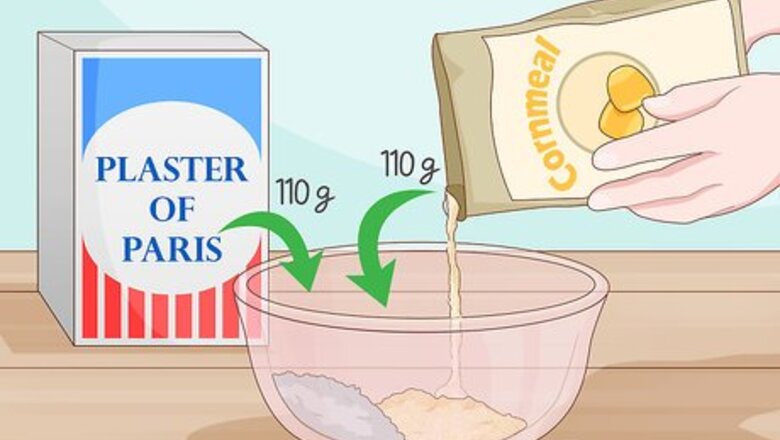
views
Plaster of Paris, Cornmeal, and Milk Poison

Mix ⁄4 lb (110 g) of plaster of Paris and ⁄4 lb (110 g) cornmeal in a large bowl. Weigh out equal parts of your ingredients and combine them in a bowl. Most craft and home improvement stores sell plaster of Paris and you can pick up cornmeal at any grocery store. If you don't have a way to weigh it, just make a 1 to 1 ratio by using a cup or mug. If you don't have cornmeal, use flour in the same proportions instead. The plaster of Paris hardens in the rats' stomach, eventually killing them.
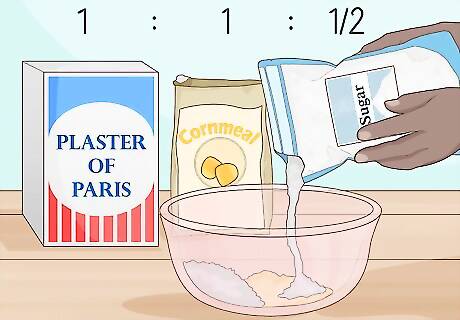
Add 1/3 cup (55 g) of sugar to make it more enticing. This step is optional, but the sweetness of the sugar will encourage the rats to eat more of the mixture. After adding equal parts of plaster and cornmeal, add half a part of sugar.
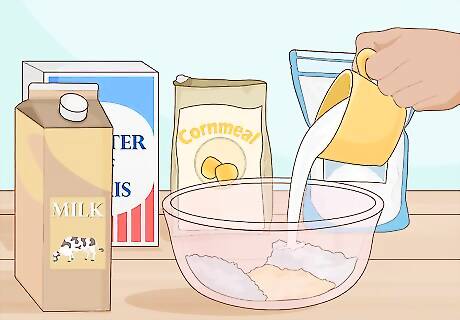
Pour in 1 cup (240 mL) of milk. Pour the milk into the powdered mixture to form a dough. You may need more milk as you go along, but start with this much so the mixture doesn’t get too wet, which will cause it not to work. If you don't have milk on hand, use water. The milk gives it more flavor to draw in the rats, but they’ll still be attracted to the cornmeal or flour alone.
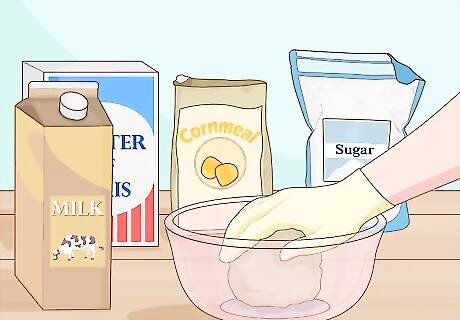
Knead the mixture together with your hands. This recipe isn't toxic to humans, but plaster of Paris can sometimes cause skin irritation, so use gloves. If the mixture isn't sticking together or you still see loose powder, add more water or milk, a spoonful at a time. You’re looking for a dough the consistency of clay. If it seems too liquidy, add more plaster and cornmeal/flour in equal parts, only adding a spoonful at a time until you get the right texture.
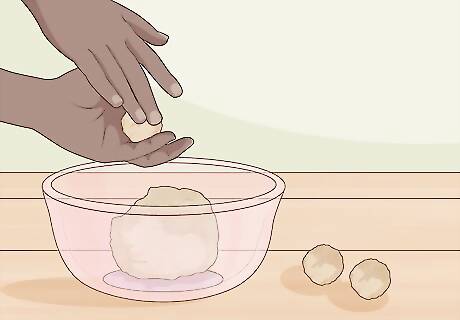
Roll the mixture into different sized balls. Pinch off parts of the dough and roll them between your hands to form balls. Make them small, medium, and large. Place the balls where you see evidence of rats (out of reach of children and pets), and check back in a day or 2 to make sure they're eating the balls. Rats have different food preferences, so the different sized balls will help cast a wider net and get more rats to eat the poison. If the balls aren’t getting eaten, you may need to move them. If the rats still aren't interested, you may need to make a new set. Once the rats start to die, remove their droppings and other litter to keep more from coming back. Rats are attracted to the scent of other rats, so use disinfectant to get rid of their smell, too.
Baking Soda Poison
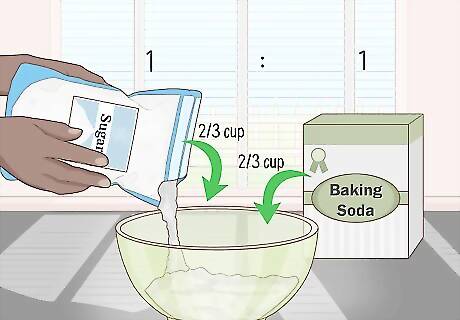
Mix together flour, baking soda, and sugar. Mix equal parts flour and sugar together in a small bowl; start with 2/3 cup (135 g) of sugar and 2/3 cup (85 g) of flour. This is what attracts the rats to the baking soda. Add another equal part of baking soda to the mixture and stir it together. You can substitute cornmeal for the flour or hot chocolate mix for the sugar. Pulse the mixture in a blender to make it more homogeneous. Another option is to mix 1 part baking soda with 2 parts peanut butter.

Place the mixture into small bowls or lids. For the best results, use disposable bowls or reuse food container lids; you don't want to use the containers again after a rat has been digging around in them! Dump some of the mixture in each bowl.
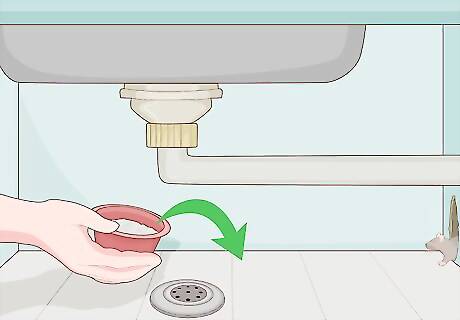
Put the containers in areas where you've seen the rats. For instance, if you've noticed rats near the stove or in your shed, set the bowls along the walls in those areas. If you see places where they've dug, put a bowl nearby for the rats to snack on. Watch out for rat droppings (small, oblong feces); they’re a great indicator that there’s a rat nearby. The baking soda mixes with the acid in the rats' stomachs and causes a buildup of carbon dioxide, eventually killing them.
Instant Mashed Potatoes Poison

Place bowls of instant mashed potatoes in the rats' path. Pour instant potato flakes into containers you won’t mind throwing away. Set them down where you've seen evidence of rats so the potato flakes are right in their paths. Use shallow bowls or disposable food lids. Put at least 1/2 cup (50 g) in each bowl so the rats can really chow down.
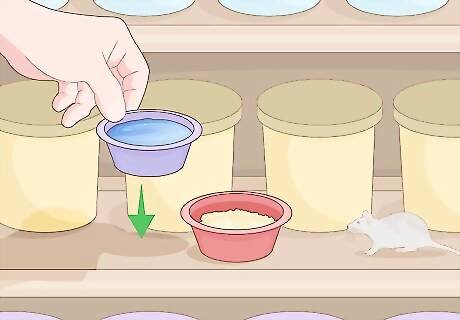
Put bowls of water near the poison. For this method to work, the rats need to drink water after consuming the potato flakes. They're typically pretty good at finding it on their own, but set out small bowls of water near the potato flakes just to ensure they have something to drink. Rats are drawn to the food, so they'll come to eat the dried flakes. Then, when they drink water, the subsequent bloating will eventually cause their deaths.
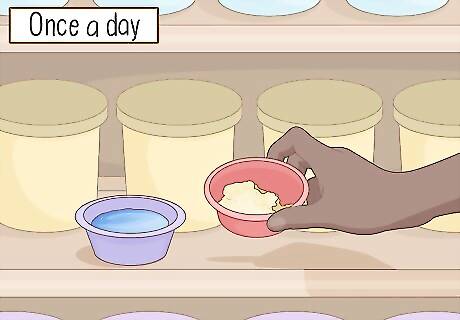
Check the bowls once a day to make sure the flakes are being eaten. If they're not being eaten, you may need to move the bowls elsewhere or add 1-2 spoonfuls of sugar to the mix to make the food more enticing.
Bleach Poison
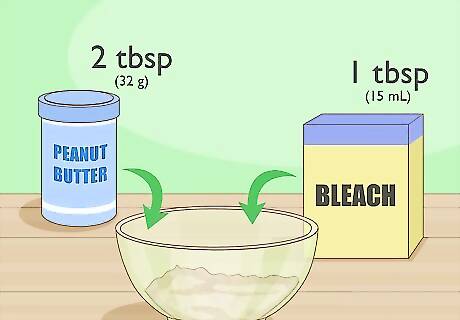
Combine bleach and peanut butter in a bowl. Put 1 tablespoon (15 mL) of bleach and 2 tbsp (32 g) of peanut butter in a bowl and mix well. Make sure the liquid is fully incorporated with the peanut butter. Use a ceramic, glass, or plastic bowl for this method. Metal bowls react when they come in contact with bleach.

Place the poison in the path of the rats. Put the peanut butter mixture into small, disposable containers, like takeout container lids. Look out for rat droppings to determine where they’re coming from, then put the poison in their paths.
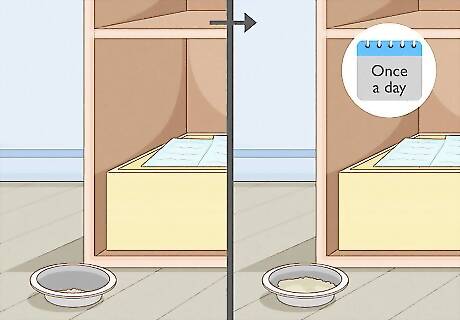
Check the containers once a day. Check the bowls to see if the poison is being eaten, and refill them when they get low.
Natural Repellents
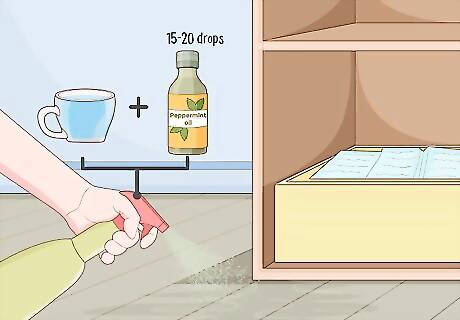
Spray peppermint oil where rats are getting into your home. Add 15-20 drops of peppermint oil or peppermint extract to 1 cup (240 mL) of water and put it in a spray bottle. Rats don’t like the smell, so spritz it in the areas where you want to repel them. Spray the area again from time to time—at least once a week. Peppermint may also deter spiders. Alternatively, dip cotton balls in peppermint oil and place them in the areas where you've seen rats.

Place bay leaves around your home. Rats dislike the smell of bay leaves, plus, if they chew on them it could be toxic enough to kill them. Sprinkle the whole, dried leaves around or use fresh leaves if you grow your own bay plant. Keep in mind that this can also cause stomach issues in other pets, such as cats and dogs.
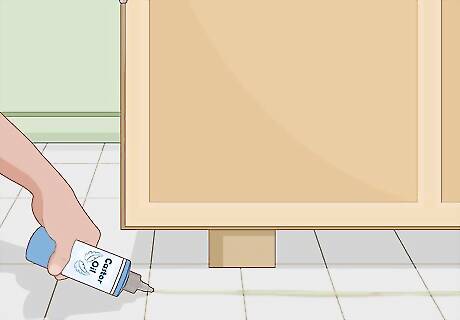
Drizzle castor oil in continuous lines to help repel rats. Castor oil tends to keep rats away, as they don't like the smell. It's similar to how citronella works on mosquitos. Make continuous lines of the oil where you don't want the rats to go to form a scent barrier. If you’re using castor oil outside, remake the lines after it rains.

Spritz ammonia or glass cleaner nearby. Rats aren't fond of the scent of ammonia. Mix 1 tablespoon (15 mL) of ammonia in 4 cups (0.95 L) of water and spray it in the areas you've seen rats. Alternatively, use a glass cleaner that has ammonia in it. Never mix ammonia and bleach, as it creates toxic fumes.
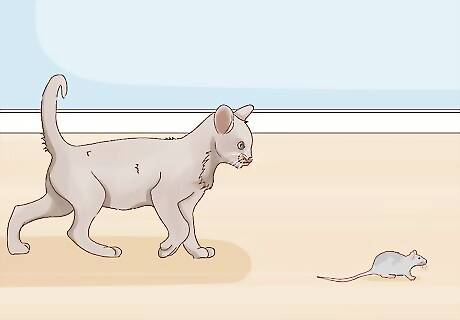
Consider “hiring” a cat. Some areas have “working cats” programs through humane societies which rent out rodent-hunting stray cats to rat infested homes. Not every cat hunts rodents, but you can contact your local shelter to see if they have any that do.
















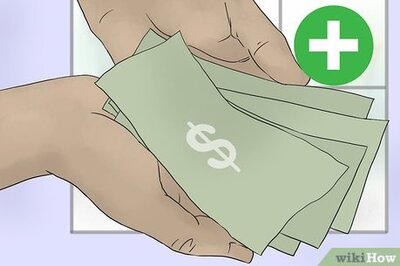

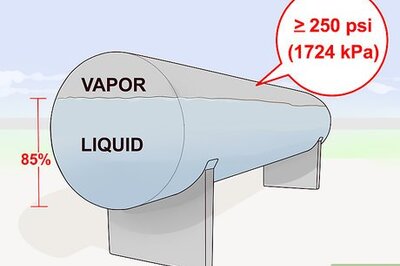
Comments
0 comment